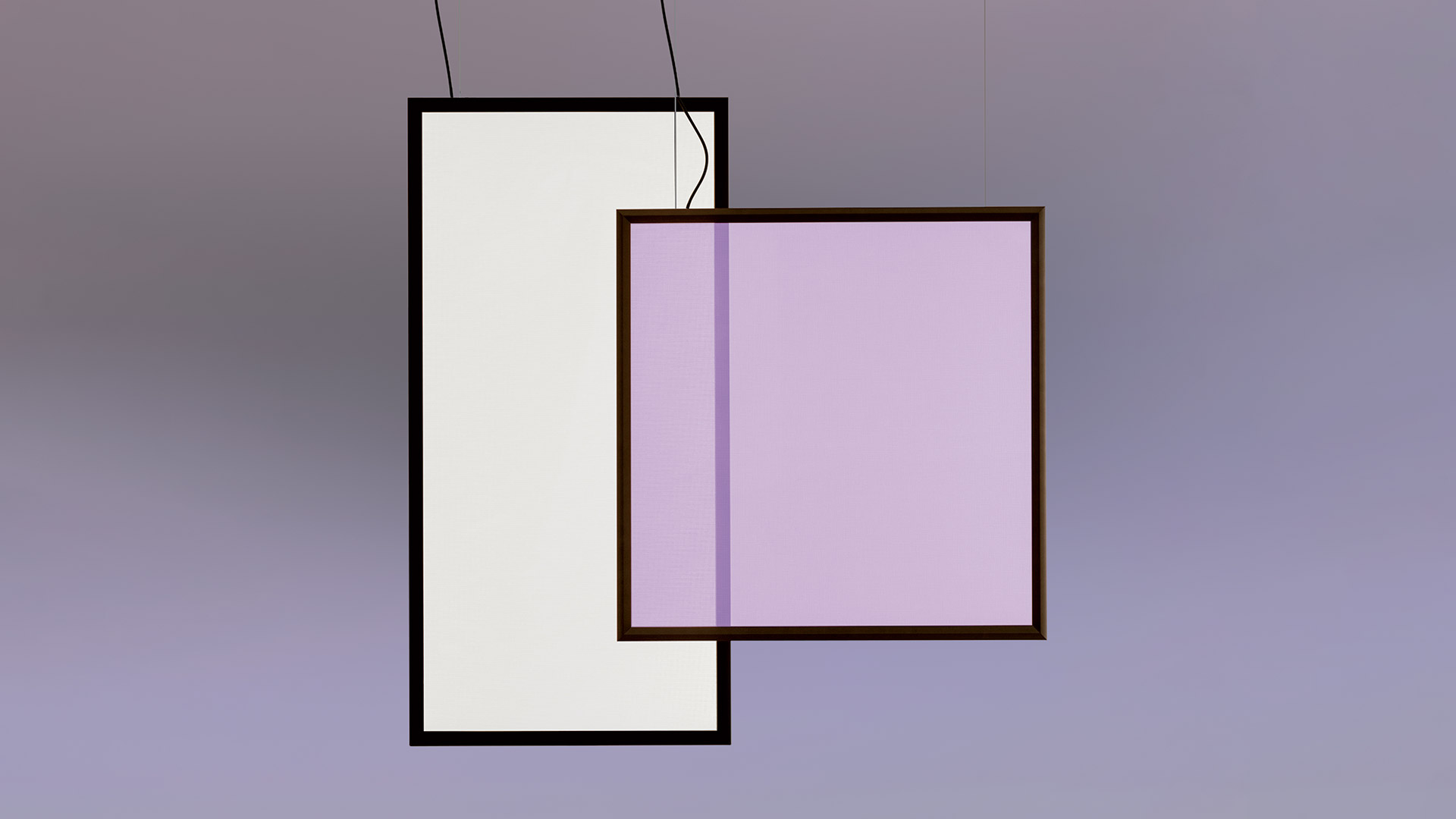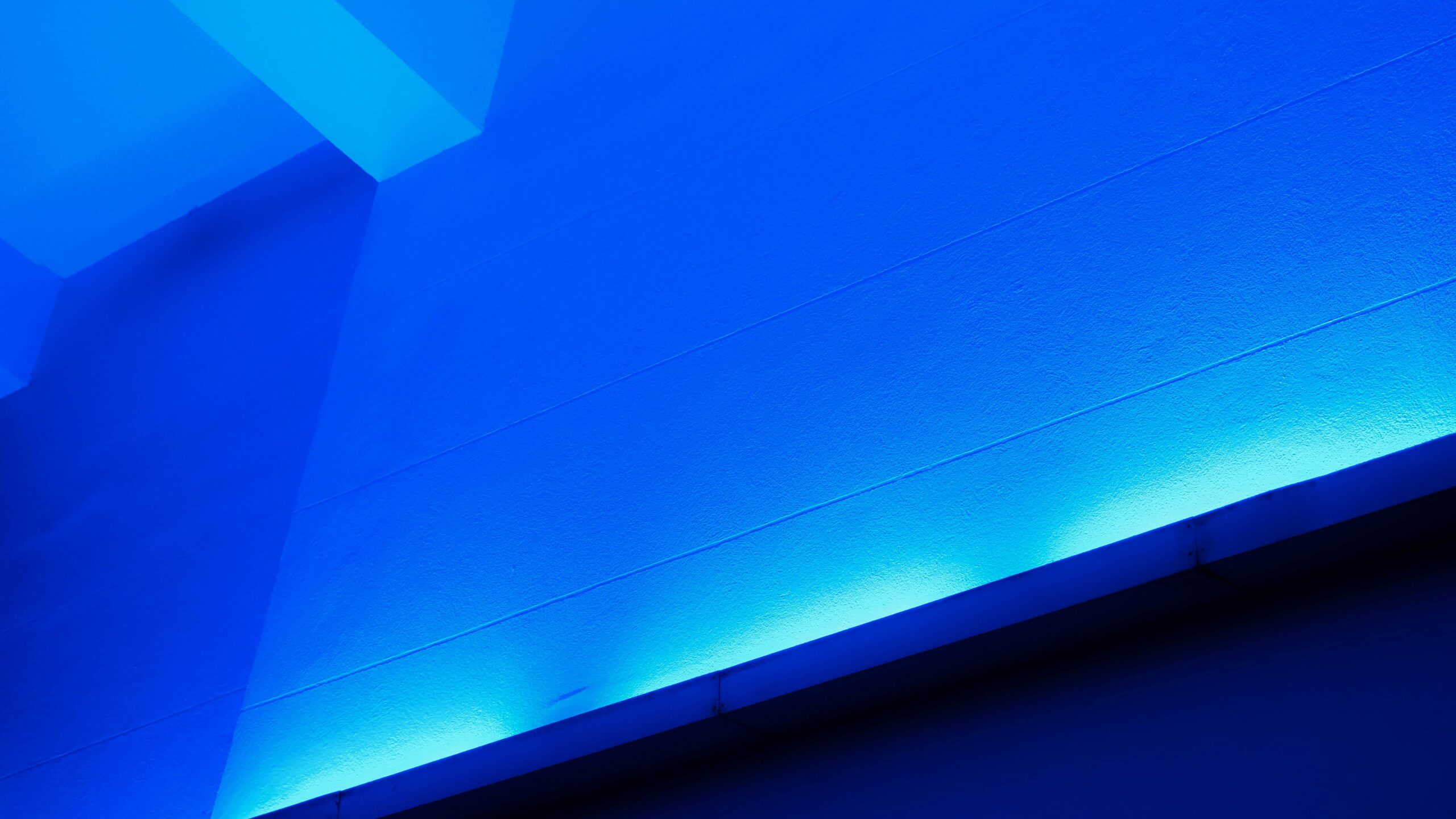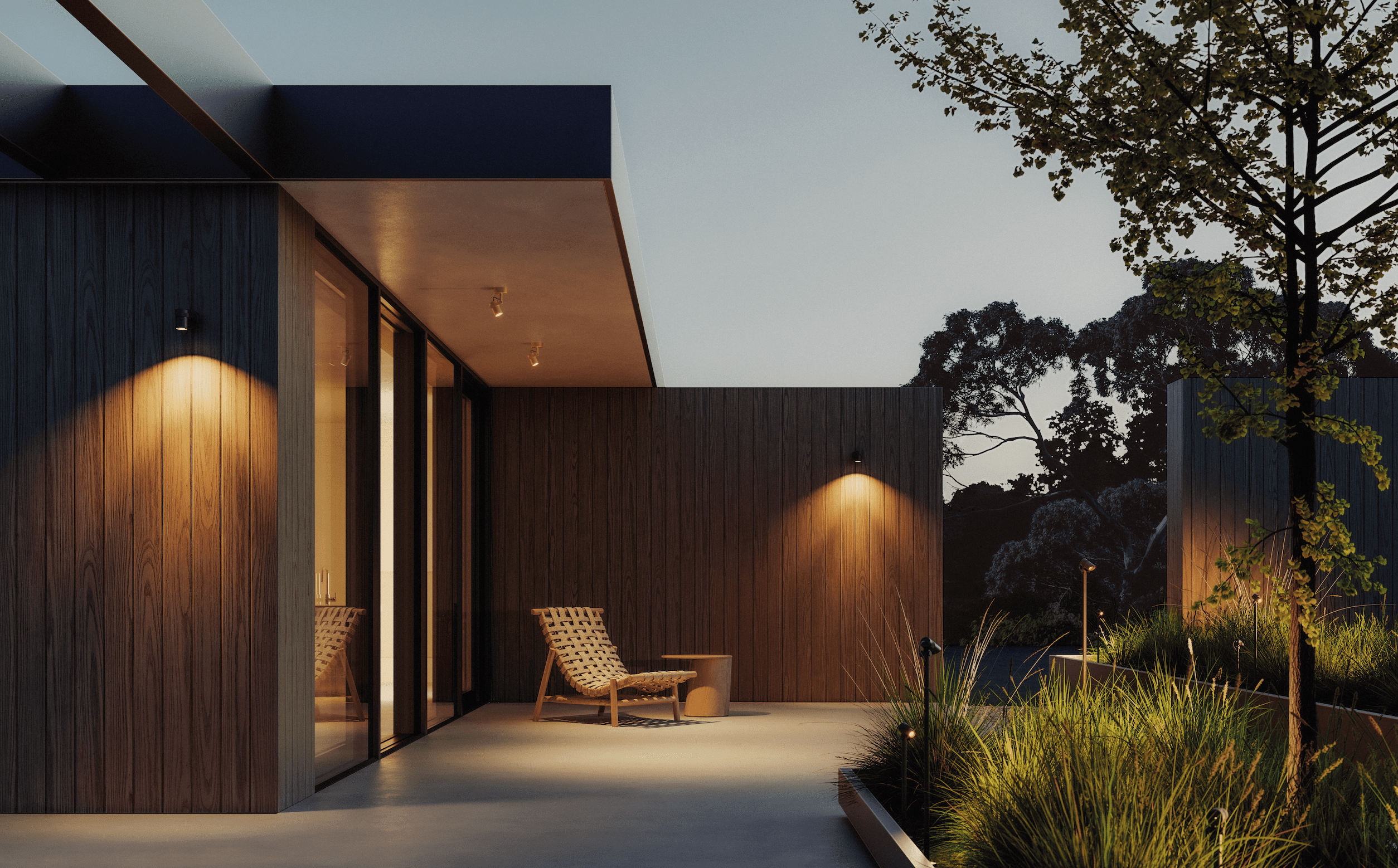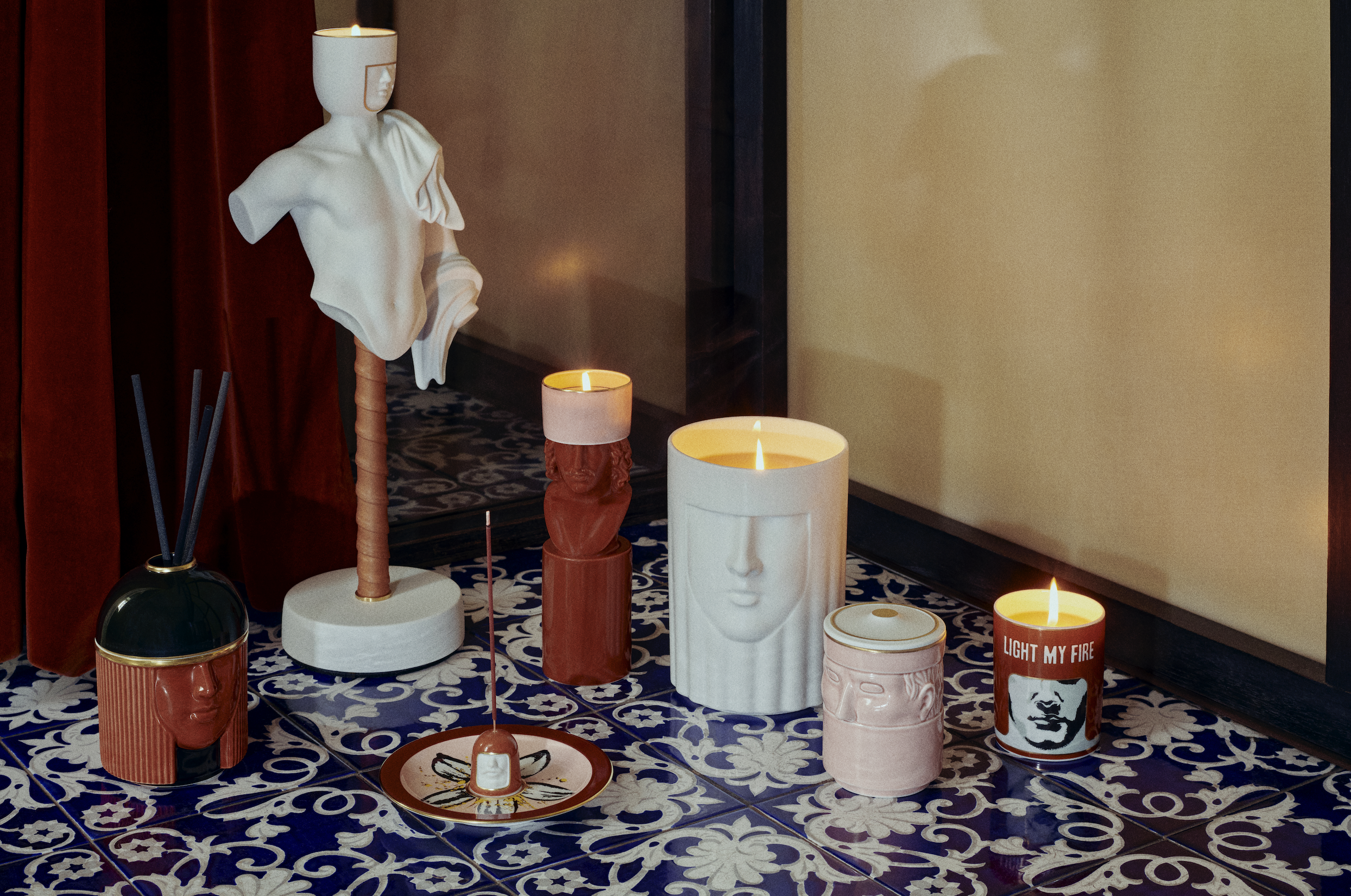The living room is the heart of the home—a place for welcoming guests, winding down on the couch, or catching up on reading between moments of rest. That’s why your living room lighting should be as adaptable as the space itself. It needs to meet different needs, support various activities, and offer flexibility in both intensity and atmosphere. Comfort is key, whether you’re focused or fully unplugged. From reading to relaxing to entertaining, here are 3 scenarios to keep in mind when choosing and placing lights in your living area.
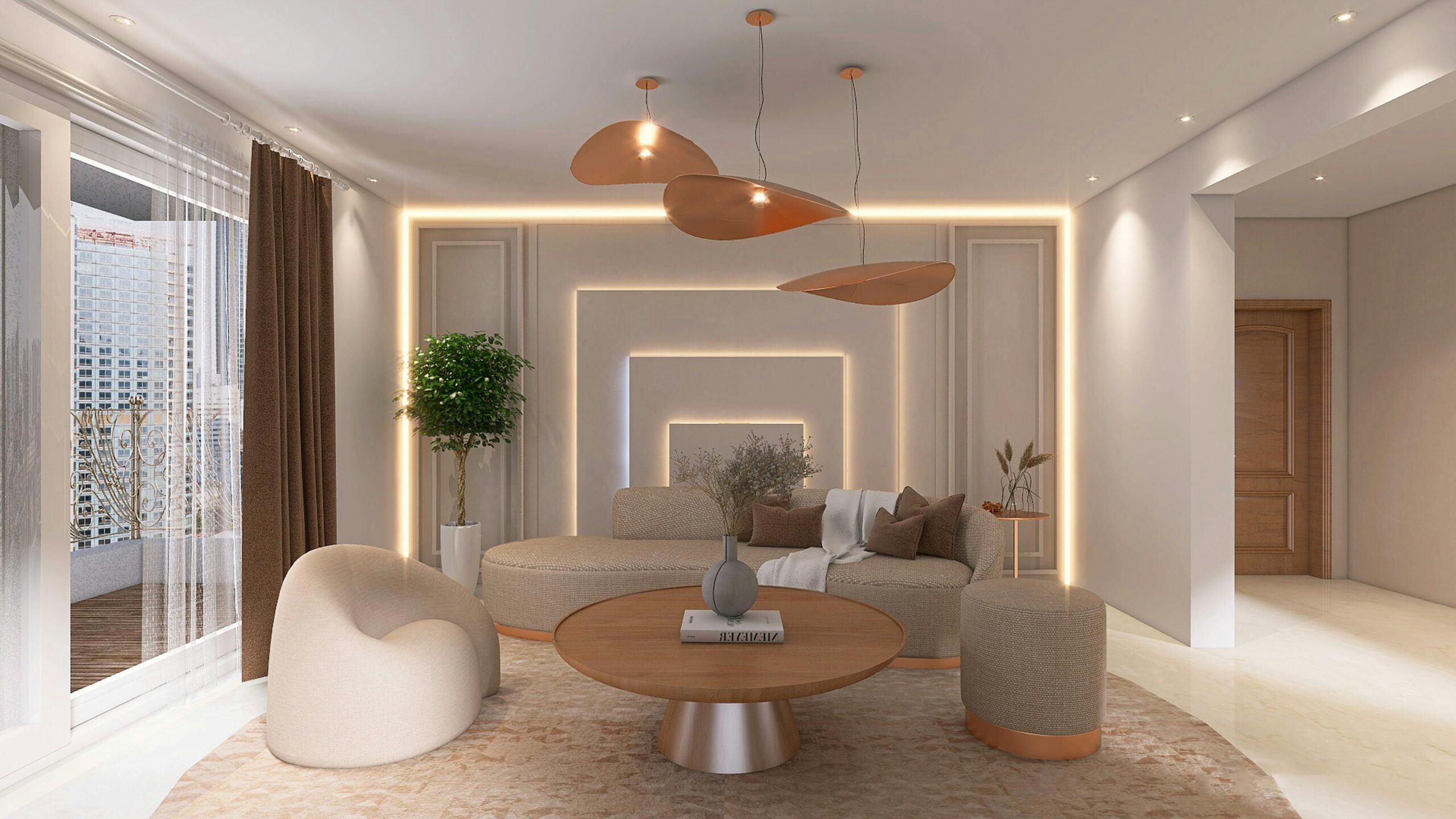
Lighting the living room for entertaining
To light a living room well, you’ll need a combination of general and task lighting. A central light source that diffuses evenly is essential for brightening the space, while accent or task lights help shape the mood and support specific moments.
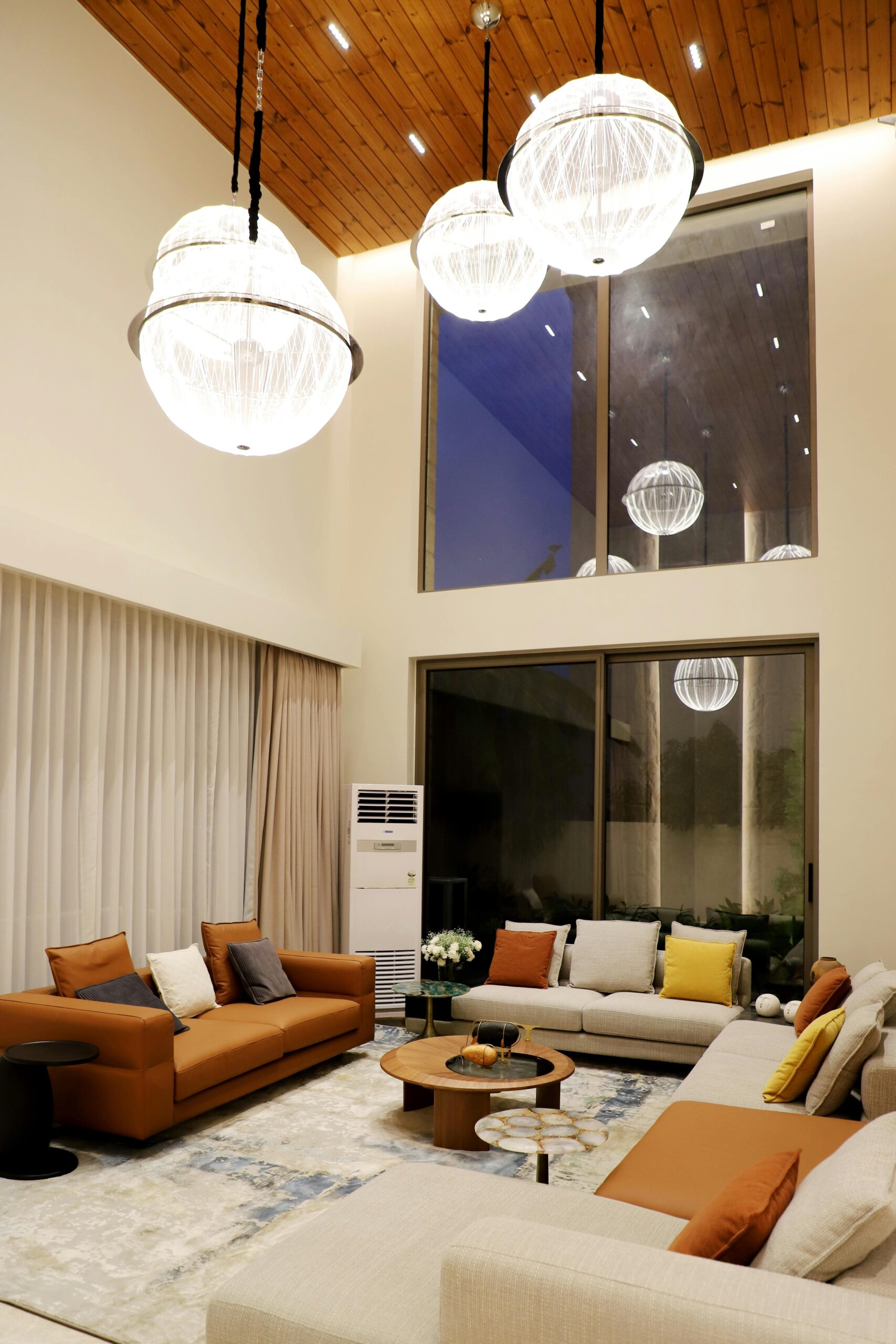
If there’s a central ceiling outlet, go for a sculptural chandelier or, if the ceiling height is limited, a decorative flush mount. Either way, place it in the center of the seating area. Dimmable options are best, allowing you to adjust brightness to the occasion. In contemporary settings, general lighting can be integrated into architectural features like recessed LED coves or spotlights in a dropped ceiling. If your space lacks a central outlet, consider using a swing-arm light or an arched floor lamp to create ambient lighting.
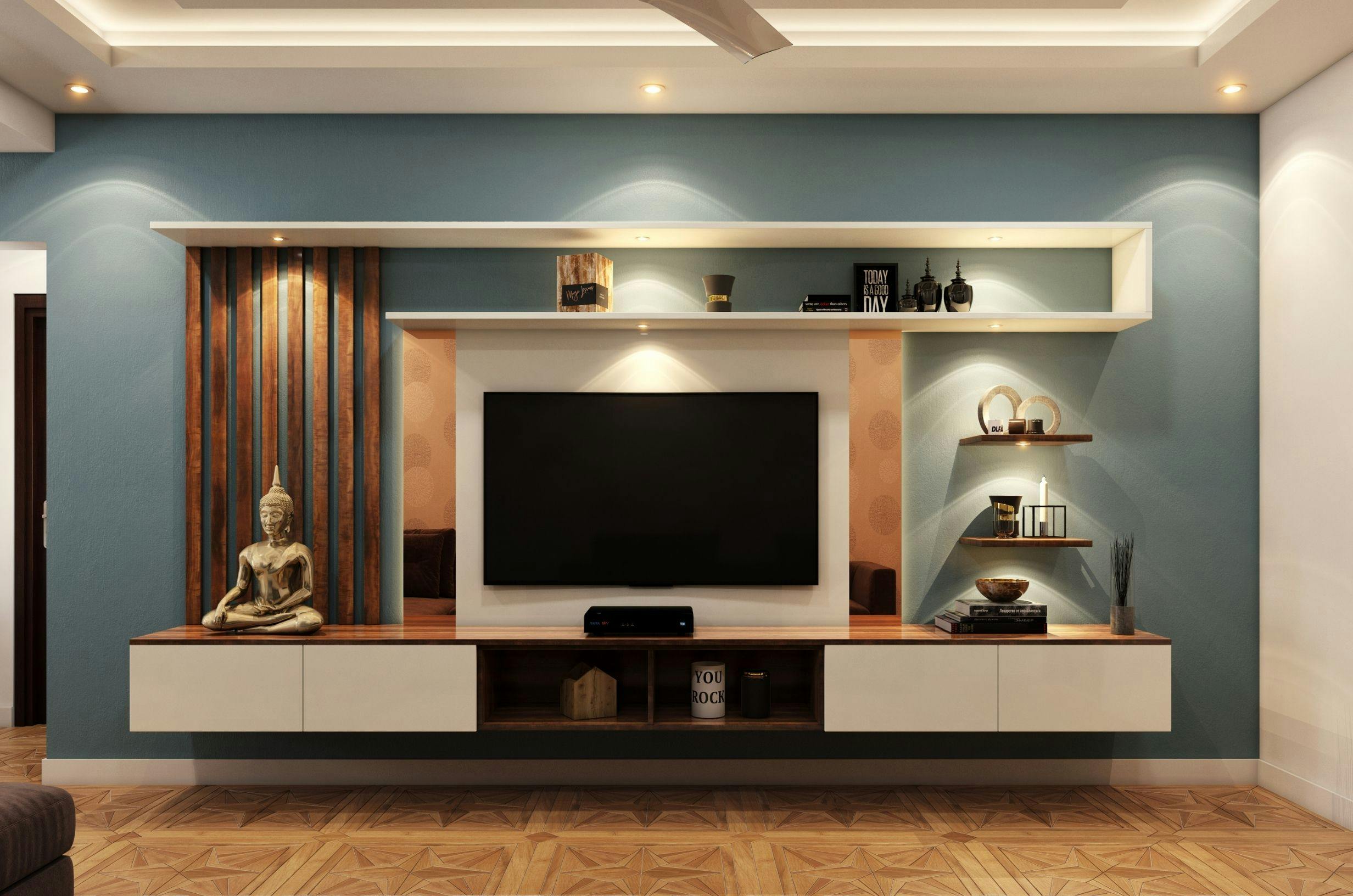
The Right Light for Reading
Curling up with a good book at the end of the day is a quiet pleasure—a way to slow down and disconnect. But reading without proper lighting can strain your eyes. So, how do you light a living room for reading? Experts recommend using a dedicated source, like a floor lamp beside the sofa that you can switch on when needed.
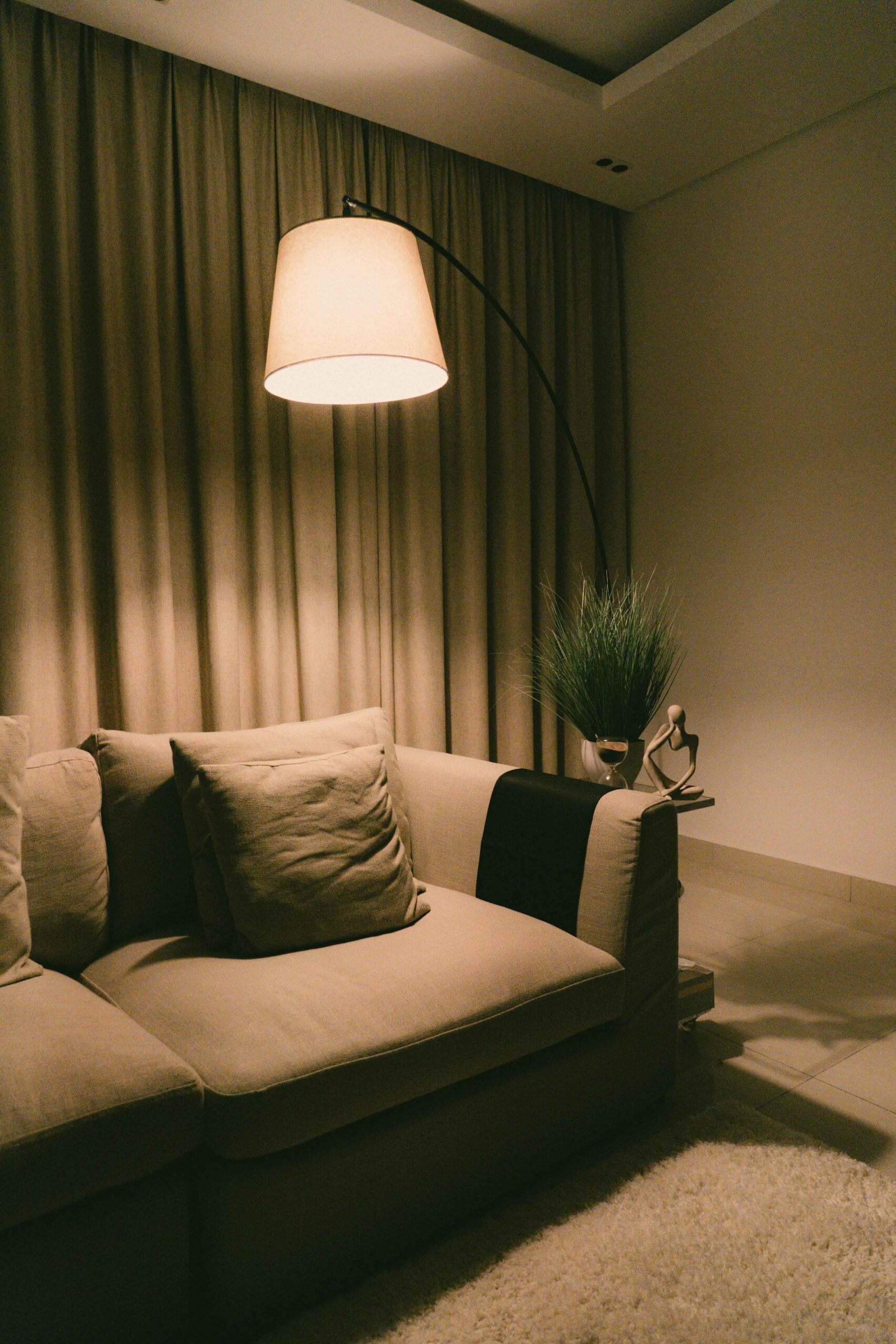
A clip-on light aimed from the bookshelf toward your reading spot, or a sconce behind the sofa, also works well.
The goal: create a focused, glare-free glow that follows your line of sight.
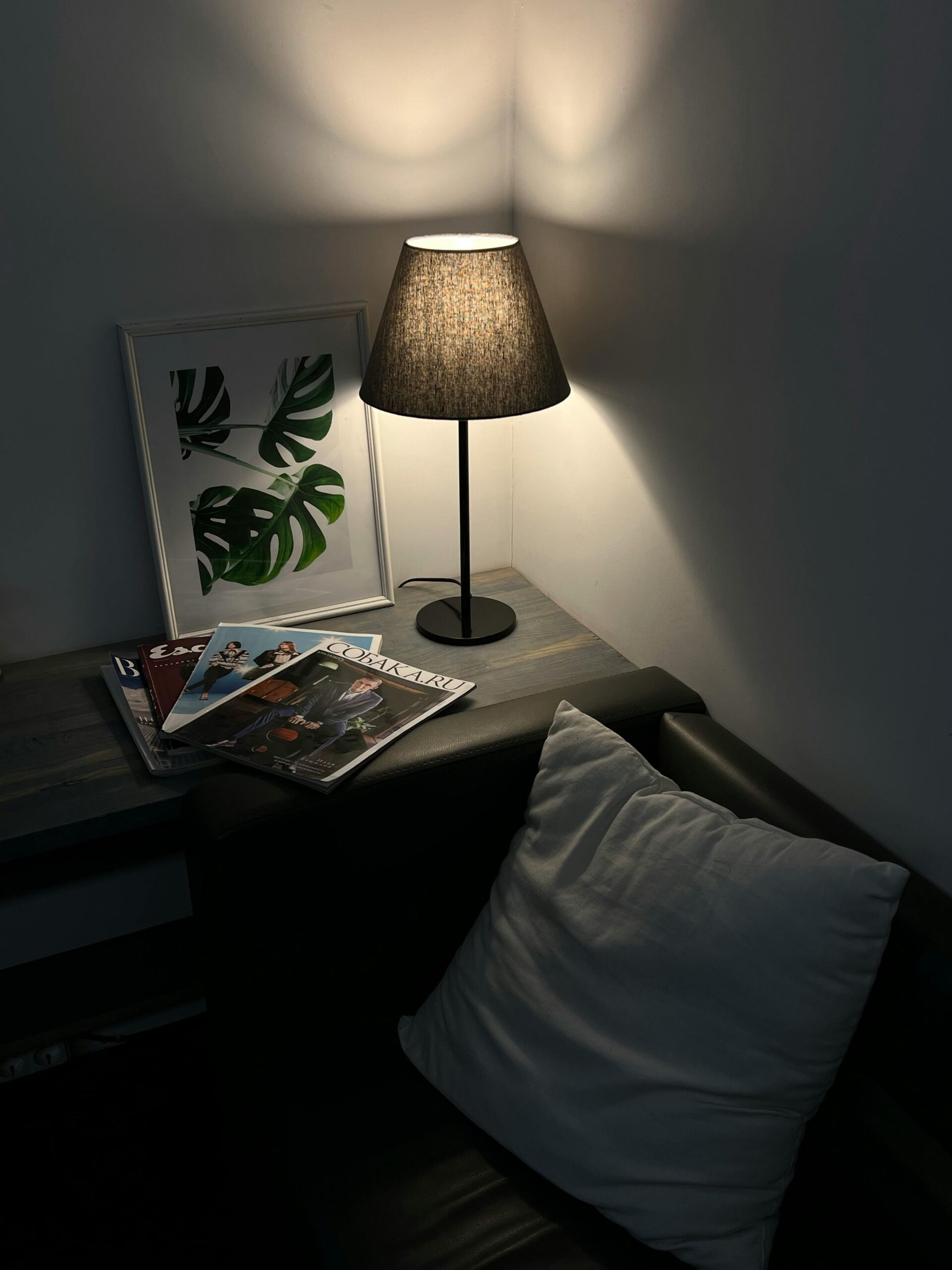
Lighting the Living Room for Relaxation
Watching TV calls for a specific lighting setup. Staring at a screen in complete darkness can fatigue your eyes, so it’s best to install a soft backlight behind the screen.
This could be an LED strip, a built-in light fixture, or even a decorative sconce. Just make sure it reduces visual contrast and avoids direct glare.
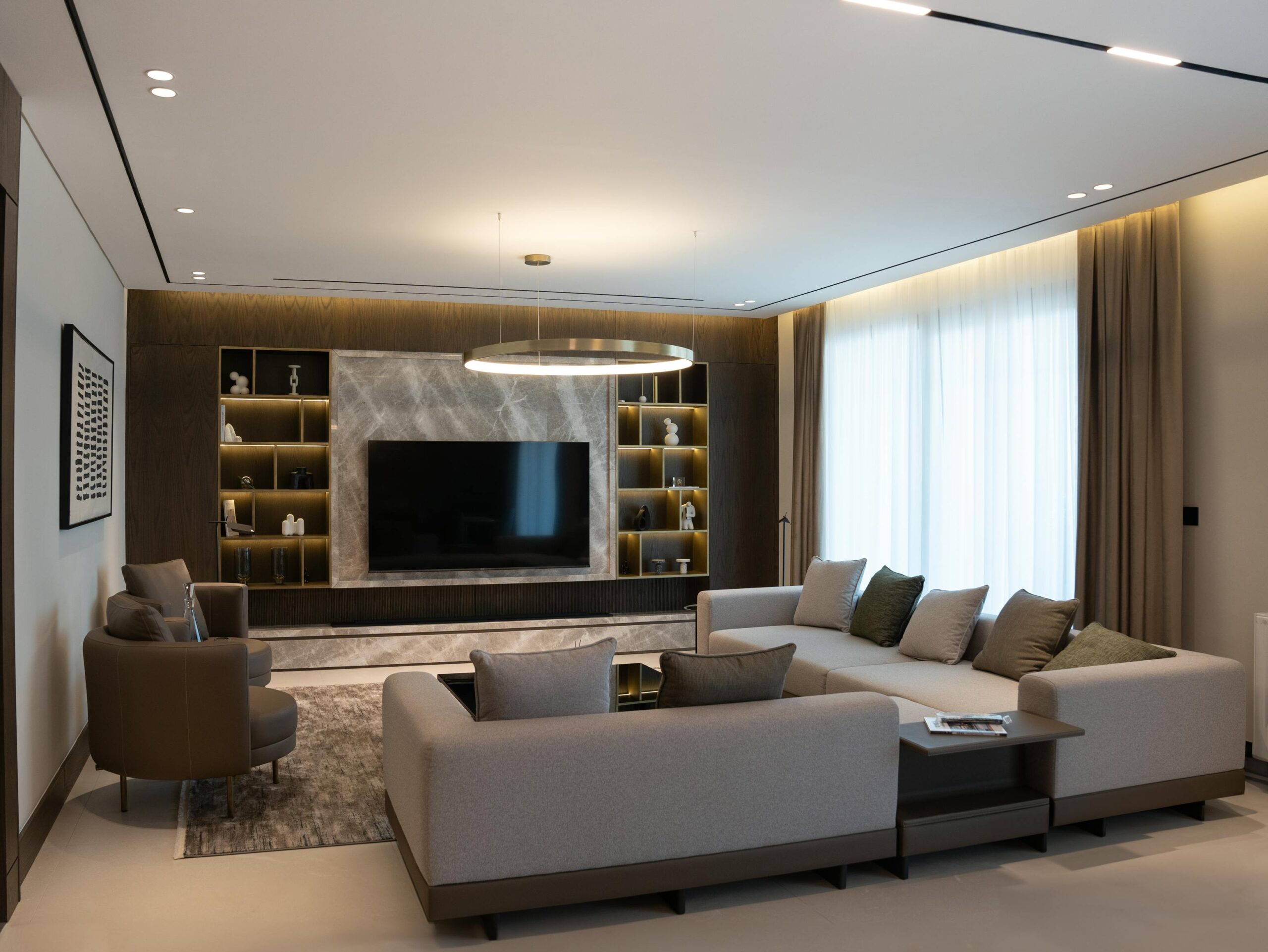
Positioning matters—always consider the viewer’s angle to prevent reflections on the screen. Alternatively, a floor or table lamp dimmed to low can provide a soft, ambient glow that supports relaxation without distraction.
